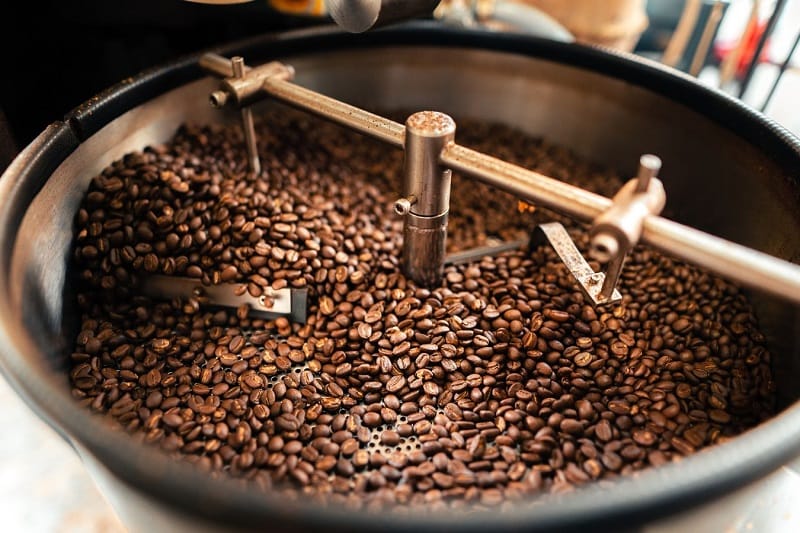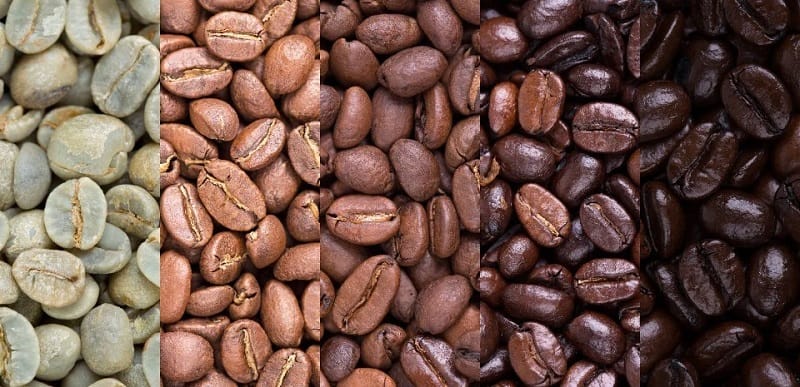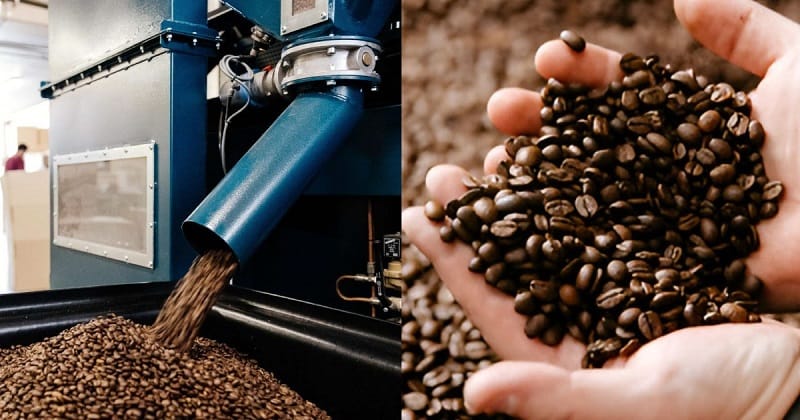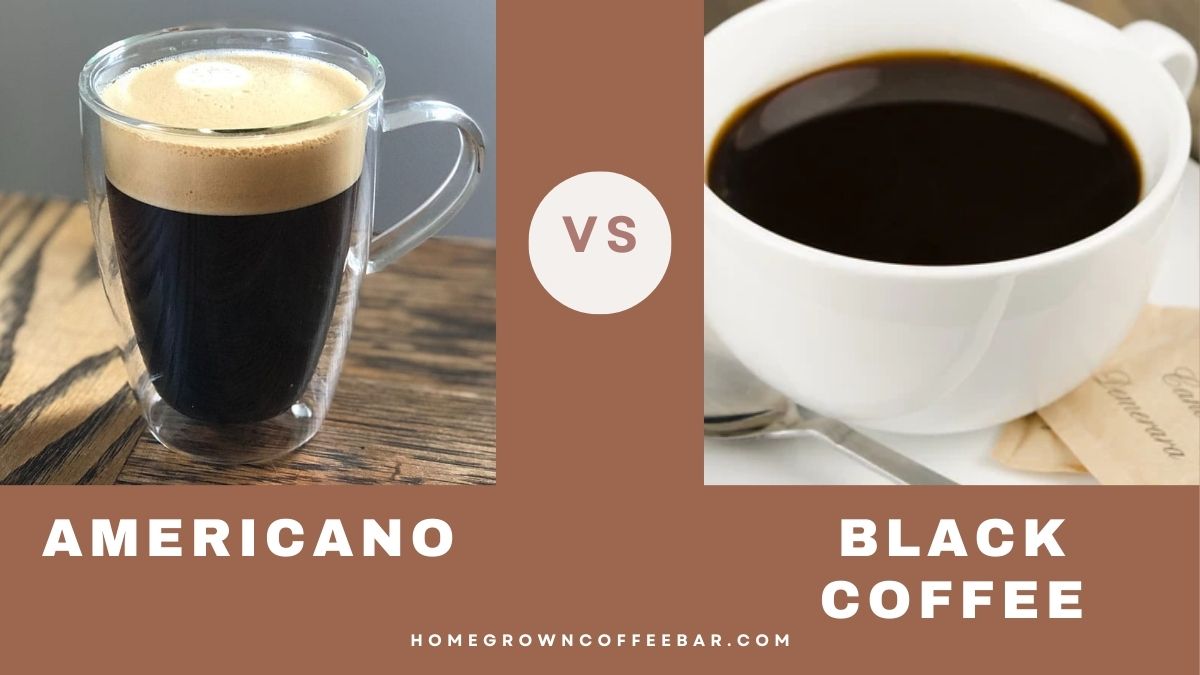What is the roasted coffee? Roasted coffee results from carefully selecting, roasting, and grinding coffee beans perfectly. Roasting coffee beans enhances their flavor, aroma, and characteristics, ultimately leading to the rich and distinct taste that coffee lovers enjoy. In this article, we will delve into roasted coffee, exploring its origins, production methods, and the factors contributing to its unique qualities. So, what is roasted coffee, and why is it so beloved by many?
The Roasting Process: Explained
Roasting is the process that turns green coffee beans into the aromatic and flavorful brown beans that we are familiar with. It is a crucial step in the coffee production process, as it enhances the taste, aroma, and quality of the coffee beans.
The roasting process begins with selecting high-quality green coffee beans. These beans are then placed in a roasting machine, undergoing a series of chemical reactions. As the machine heats up, the beans start to release moisture and undergo a transformation. The roasting machine rotates the beans to ensure even roasting and prevent them from burning.
During the roasting process, the heat causes various chemical changes in the beans. The natural sugars in the beans caramelize, giving the coffee a rich, sweet flavor. The heat also breaks down the complex molecules in the beans, releasing the distinct aromas we associate with coffee.

Source: helenacoffee.vn
The roasting process is a delicate balance of time, temperature, and skill. Different roasters use different techniques to achieve specific roast levels. Light roasts are roasted for a shorter period at lower temperatures, resulting in a brighter flavor profile with more acidity. Medium roasts are roasted for a bit longer, producing a well-balanced flavor with medium acidity. Dark roasts involve longer roasting at higher temperatures, leading to a bolder flavor with less acidity.
After the beans have been roasted to the desired level, they are rapidly cooled to stop the roasting process. This cooling process helps lock in the flavors and aromas developed during roasting. The beans are then sorted to remove any defective or damaged beans.
Benefits of Roasted Coffee
Roasted coffee offers numerous benefits beyond just satisfaction for your taste buds. As a coffee lover, I have discovered the many advantages of enjoying freshly roasted coffee.
First and foremost, roasted coffee provides a delightful and full-bodied flavor that is hard to resist. The roasting process brings out the natural oils and flavors in the coffee beans, resulting in a rich and aromatic brew. Whether you prefer a light, medium, or dark roast, each roast level offers its unique flavor profile that is sure to please your palate.
In addition to its delicious taste, roasted coffee offers several health benefits. One of the key benefits is its high antioxidant content. Antioxidants are important for fighting off free radicals in the body, which can cause oxidative stress and lead to various health issues. By consuming roasted coffee, you can enjoy the goodness of antioxidants supporting your overall well-being.
Furthermore, roasted coffee has been associated with improved cognitive function. Caffeine caffeine is a stimulant that enhances alertness, concentration, and memory. It can give you that much-needed boost of energy and mental clarity to start your day or stay focused.
Drinking roasted coffee has also been linked to a reduced risk of certain chronic conditions. Studies have shown that regular coffee consumption is associated with a lower risk of developing conditions such as type 2 diabetes, Parkinson’s disease, and liver disease. The compounds found in coffee, such as chlorogenic acid and caffeine, may have protective effects on the body.
Lastly, enjoying freshly roasted coffee can be a delightful part of your daily routine, providing relaxation and indulgence. The aroma and taste of roasted coffee can uplift your mood and provide a comforting experience that can be enjoyed alone or shared with others.
So, if you are a coffee lover like me, indulge in the benefits of roasted coffee and savor each cup for its incredible taste and potential health-boosting properties. Cheers to the joy and benefits of a freshly brewed cup of roasted coffee!
Different types of roast levels (light, medium, dark)

Roasting coffee beans is an art form that involves precision and mastery to achieve the perfect balance of flavors. One of the key factors in the roasting process is the level of roast, which refers to the degree to which the beans are roasted. There are generally three main types of roast levels: light, medium, and dark. Each roast level offers unique characteristics and flavors, catering to different tastes.
Light roast coffee is typically characterized by its light brown color and lack of oil on the beans’ surface. This roast level preserves the beans’ original flavors and acidity, producing a crisp and bright taste profile. Light roast coffee tends to have a higher caffeine content and a lighter body or viscosity. It is perfect for those who enjoy the delicate and nuanced flavors of the coffee’s origin.
Medium roast coffee falls in the middle of the roast spectrum, offering a balance between the flavors of the coffee bean and the roasting process. The beans have a medium brown color and may start to develop a subtle sheen of oil. Medium roast coffee is known for its balanced acidity, slightly richer flavors, and medium body. It has a wider appeal and is often favored by those who enjoy a well-rounded and flavorful cup of coffee.
On the other end of the spectrum is dark roast coffee. This roast level is characterized by its dark brown color and oil-coated surface, which gives the beans a bold and smoky flavor. Dark roast coffee tends to have a lower acidity level and a heavier body. The flavors of the coffee bean are often overpowered by the intense roasting process, resulting in a deep, robust, and full-bodied cup of coffee. It is preferred by those who enjoy strong and rich flavors with a touch of bitterness.
The choice of roast level ultimately depends on personal preference. Some coffee lovers enjoy a light roast’s bright and vibrant flavors, while others prefer a dark roast’s strong and bold flavors. With its balanced characteristics, medium roast offers a versatile option for those seeking a harmonious blend of flavors. Exploring the different roast levels can be an exciting journey, as each brings its unique flavors and experiences to the table. So, embrace the variety and discover your perfect cup of roasted coffee.
Roasting Techniques
Roasting coffee is an art that requires precision and technique to achieve the perfect flavor and aroma. There are different roasting techniques that coffee roasters use to bring out the best qualities of the beans. I will provide an overview of some popular roasting techniques commonly used in the industry.
- Air Roasting: Air roasting is where hot air is used to roast the coffee beans. The beans are suspended in a chamber, and hot air is blown through them, roasting them evenly. This technique allows precise control over the roast level and produces coffee with bright acidity and distinct flavors.
- Drum Roasting: Drum roasting is one of the traditional methods of roasting coffee. The coffee beans are placed in a rotating drum and heated in this technique. The beans are tumbled continuously, allowing for even heat distribution and consistent roasting. This method is known for producing full-bodied and well-rounded coffee flavors.
- Fluid Bed Roasting: Fluid bed roasting, also known as hot air roasting, involves suspending the coffee beans in a stream of hot air. The beans are constantly agitated and roasted evenly. This method produces coffee with a clean and crisp taste, highlighting the beans’ original flavors.
- Direct Flame Roasting: Direct flame roasting is a method where the coffee beans are roasted over an open flame. This technique requires a skilled roaster who can control the flame’s intensity and the beans’ proximity to it. Direct flame roasting creates robust and smoky flavors in the coffee.
Each roasting technique brings its unique characteristics and flavors to the coffee. The choice of technique depends on the desired flavor profile and the expertise of the roaster. Experimenting with different techniques can discover new and exciting flavors in your cup of coffee. So, next time you enjoy a freshly roasted coffee, take a moment to appreciate the skill and technique that went into transforming those green beans into a delightful brew.
Brewing methods for roasted coffee

Source: perfectdailygrind.com
When it comes to brewing roasted coffee, there are several methods you can choose from to extract the best flavors and achieve your desired taste. Each method has its unique way of bringing out the nuances of the roasted beans, allowing you to enjoy a rich and flavorful cup of coffee. Here are some popular brewing methods that you can try:
- Pour-Over: The pour-over method is a simple and classic way to brew coffee. You only need a pour-over dripper, a paper filter, and hot water. Just place the dripper on top of your cup or carafe, insert the filter, add ground coffee, and slowly pour hot water over the coffee in a circular motion. This method allows for precise control over-extraction, resulting in a clean and vibrant cup of coffee.
- French Press: The French press is a favorite brewing method for many coffee enthusiasts. It involves steeping coarsely ground coffee in hot water and pressing down a plunger to separate the grounds from the brewed coffee. This method produces a full-bodied cup with a rich and robust flavor.
- Aeropress: The Aeropress is a versatile, portable brewing device for various flavors. It uses pressure to extract coffee, similar to an espresso machine. With the Aeropress, you can adjust variables such as grind size, water temperature, and steeping time to create your perfect cup of coffee.
- Espresso Machine: For those who love a strong and intense coffee experience, an espresso machine is the way to go. Espresso machines use high pressure to force hot water through finely-ground coffee, resulting in a concentrated and flavorful shot of espresso. You can enjoy it alone or use it as a base for coffee beverages like lattes and cappuccinos.
- Cold Brew: Cold brewing is a method that uses cold water to extract the flavors from coffee over an extended time. It involves steeping coarsely ground coffee in cold water for 12-24 hours, then filtering the brew. Cold brew coffee is known for its smooth and low-acidity characteristics, making it a refreshing choice, especially during hot summer.
Remember, the brewing method you choose will affect the flavor and strength of your coffee. Experiment with different methods to find the one that suits your taste preferences. And don’t forget to use freshly roasted beans for the best possible results. Happy brewing!
Tips for storing and preserving roasted coffee
When preserving the freshness and flavor of roasted coffee beans, a few tips and tricks can make a big difference. Here are some helpful tips for storing and preserving your roasted coffee:
- Use an airtight container: It’s important to store your roasted coffee beans in an airtight container to prevent exposure to oxygen. Oxygen can quickly degrade the flavors and aromas of the coffee. Look for containers with a one-way valve to release the trapped carbon dioxide without allowing oxygen.
- Keep it cool: Heat is the enemy of roasted coffee beans. It can accelerate the breakdown of the coffee’s oils and degrade the taste over time. Store your coffee in a cool and dark place, away from direct sunlight or heat sources like the oven or stove. A pantry or cupboard is usually a great spot.
- Avoid moisture: Moisture can cause the coffee beans to deteriorate and become moldy. Keep your coffee away from moisture-prone areas, such as near the sink or refrigerator. Also, avoid storing your coffee in the freezer, as the constant thawing and freezing can affect the flavor.
- Buy in smaller quantities: It’s best to buy roasted coffee beans in smaller quantities rather than in bulk. This ensures that you consistently use fresh beans and not let them sit for too long. Aim to use the beans within two to three weeks of the roast date for the best flavor.
- Grind only what you need: Coffee beans start losing their flavor as soon as they are ground. To preserve the freshness, it’s recommended to grind the beans just before brewing. Invest in a good quality burr grinder to achieve a consistent grind size.
By following these tips, you can extend the life of your roasted coffee beans and enjoy a fresh and flavorful cup every time. So, remember to store them in an airtight container, keep them away from heat and moisture, buy in smaller quantities, and grind only what you need. Happy brewing!




